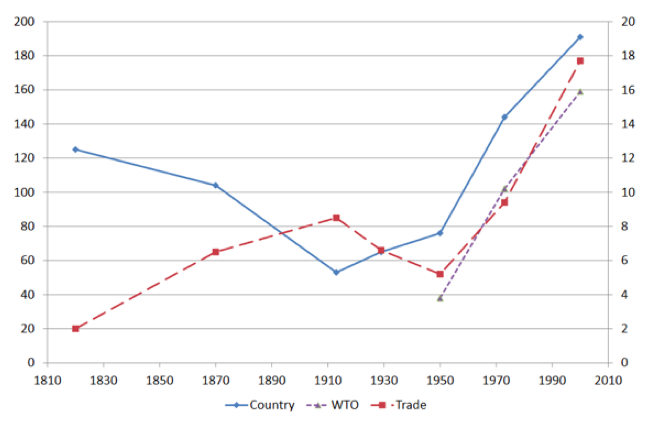
Photo by Edwin Hooper on Unsplash
In my all-time favourite book ‘Antifragile’, Nassim Taleb divides the world into 3 categories- fragile, robust and antifragile. He refers to fragility as the state of being that involves avoiding disorder and disruption for fear of the mess that threatens to disrupt your life: you think you are keeping safe, but really you are making yourself vulnerable to the shock that will tear everything apart. Robustness is the ability to stand up to shocks without flinching, without changing who you are. But you are antifragile if shocks make you better able to adapt to each new challenge you face. You are antifragile if you can opportune from disruptions, to be stronger and more creative. Taleb thinks we should all try to be antifragile!
On March 11, 2020, declared a world pandemic, the COVID-19, is an epitome of the chaotic disruption Taleb was referring to. The onset of this crisis got me pondering whether populations, institutions, financial bodies, governments and policy-makers -i.e. the world as a whole will be able to be resilient in the face of the aftermath of this crisis? Do we have the acceptance, courage and strength besides the technical, innovative and problem-solving skills to start afresh and turn this disequilibrium around into the most memorable salvation story we have ever seen? Or will we succumb to this dooming, seemingly apocalyptic spiral, and lose everything we take for granted in our day-to-day lives? When the noise of this unprecedented shock dies, will we be left at the inception of a brand new system that will push us to rethink policies, and rewrite mandates that shape, govern and structure the world?
The outbreak of this global health crisis saw a strong backlash against globalization in the form of acceleration of trends underway. Before COVID-19 slammed the global economy earlier this year, China had adopted selective international exchange rates for political incentives. This had consequently led to US-China trade wars involving up to 25% tariff imposition on Chinese imports.
In March, COVID-19 contributed to this backdrop by declining the number of cargo ships setting off for the United States by 10%. The cost of shipping goods by air nearly doubled, restricting trade further. In order to contain the outbreak of the rapidly spreading virus, countries were forced to close their borders to foreign visitors which severely restricted the movement of people worldwide.
With no signs of the situation returning to normalcy, countries are desperately trying to be “self-sufficient” by ordering factories at home to produce ventilators, banning exports of face masks, and localizing pharmaceutical supply chains even at the cost of added expenses. The declaration of a potential suspension of immigration into the U.S by the President seemed like a final nail in the coffin for the era of globalization.
The world’s response to COVID comes across as ratifying Trump’s argument for protectionism and supply chain controls. This alludes to a pressing question in such uncertain times: Will the world remain flat after the curve flattens after all? Let’s first look at what does it mean for the “world to be flat”? In the book, ‘The world is flat’ by Thomas L. Friedman, the author endorses his view of the world as a level-playing field, wherein all players have equal opportunity and the world is a global market where historical and geographic boundaries are becoming increasingly irrelevant.
Globalization has persisted in different forms for decades. In my opinion, just like the dotcom bubble, 9/11 debacle, 2008 financial crisis, the COVID-19 pandemic too, is a temporary shock, which will perhaps change the face of globalization but not sink it. In the near future, we will likely either have a vaccine or much of the world will be infected by the virus. Either way, the current restrictions will neither be needed nor sustainable in the long run.
For instance, by the time the curve peaks, most countries will perhaps already have bought or produced enough inventory. In that case, will it really make sense to use tax-payers money on incurring exorbitant production costs to set up ventilator factories at home when their supply is already bolstered by sufficient purchase? Evidently, medical supply chains will change less than politicians currently promise!
But even after the shock evanesces, COVID-19 will heavily influence the decision-making process with regards to investment and relocation. Many argue that the crisis was an exemplary demonstration of increased risks associated with globalised supply-chains. A flip-side to the dispute is that in the quest to maximize profits and reduce the risk of localized disruption from the crisis, if anything, firms might only expand production lines across the world, creating employment more evenly, and promoting eventual global recovery. In fact, the renowned economist, Obstfeld, who served as IMF’s chief from late 2015 through 2018, said that “While global supply chains will undoubtedly change in a post-crisis economy, much of that change will be in the form of diversification, not on-shoring.”
While layoffs and increasing unemployment in a post-crisis recessive economy are inevitable, they will not mark the end of outsourcing. Turning to autarky-like economies will be too costly to be sustainable for countries world-over. There will be plenty of opportunities to employ people in jobs that demand highly skilled labour to meet the needs of the recovering economies. This will pave the way for Globalisation 3.0, described in Friedman’s book as individuals focusing on finding their foothold in the present global competition and making significant global collaborations. In fact, skill up-gradation of this form, to ensure relevance as demanded by the need of the hour, will push humans towards becoming antifragile, as recommended by Taleb.
However, “Outsourcing is just one dimension of a much more fundamental thing happening today in the world”, Friedman claims. Experts often view globalization from a one-dimensional perspective- physical goods and services crossing borders. But in fact, many intangibles- data, value, ideas, innovation frequently cross borders. In his book, Friedman emphasizes that “You don’t need to emigrate to innovate”. “Globalization in recent times has created a platform where intellectual work, intellectual capital, can be delivered from anywhere. It could be disaggregated, delivered, distributed, produced and put back together again — and this gave a whole new degree of freedom to the way work is done, especially work of an intellectual nature.” In light of this view of global integration, I believe that the world is going to get flatter. With workforces across nations getting training on Zoom video conferencing, to extensive sharing of knowledge in research on medical advances, the spillover of ideas and innovation is going to witness only an onward spur. The quantity and value of data transmitting between countries are increasing and with the high-value data processing replacing supply chains as the predominant channel of global economic exchange, I see this only increasing further.
So is the world after coronavirus tending to globalization or deglobalization? I think it depends on where you look. COVID can make it harder to ship Chelsea fan-club merchandise around the world, but no quarantine can contain cryptos from crossing borders!

Krisha Gandhi ’20 is a student in the Barcelona GSE Master’s in International Trade, Finance, and Development.

